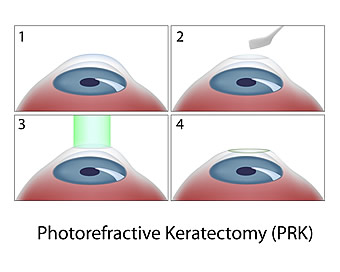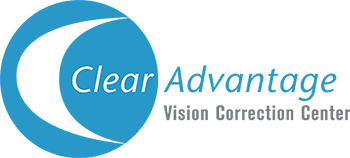Posted by: Clear Advantage in Uncategorized on February 9, 2022
LASIK is a popular procedure, but it’s not for everyone. To qualify for it, you must meet a certain amount of criteria, and some individuals aren’t a good fit.
Fortunately, LASIK is not the only procedure that can dramatically improve your vision. Many people are not aware that there is a great alternative: PRK.
If you are not a good candidate for LASIK, you can still experience a range of benefits with PRK. Keep reading to find out if PRK may be right for you if you’re not a good LASIK candidate!

What is LASIK?
LASIK is one way to correct refractive errors in the eye. As a permanent procedure, it treats nearsightedness, farsightedness, and astigmatism.
The procedure works by gently reshaping the cornea, the outermost layer at the front of the eye. The cornea functions to focus light onto the retina for you to see clearly.
When you have a refractive error, it cannot bend light correctly, resulting in blurry vision. First approved by the FDA over two decades ago, more than ten million people have undergone LASIK. However, as popular as LASIK is, it’s not recommended for everyone.
Am I a Good Candidate for LASIK?
You must be at least 18 years old to qualify for laser eye surgery. LASIK is only FDA-approved for this age. As you get older, your eyesight continues developing and changing.
Many of these changes occur as a result of hormonal changes. If you underwent LASIK before your eyes stabilized, it would not be as successful, and you may need to have an enhancement procedure in the future to get the results you want.
Good candidates for LASIK have a stable prescription. If your prescription is stable, it means your prescription has remained the same for at least a year or more. Some LAISK surgeons prefer LASIK patients have a prescription that’s remained unchanged for at least two years.
Another factor for LASIK candidacy is having healthy eyes. Eye diseases and conditions like cataracts and current infections can pose a particular risk and make results unpredictable.
If a patient has dry eye syndrome, symptoms should be under control to avoid any additional risk. Once dry eye syndrome is under control, you may be able to get LASIK.
LASIK candidates should also be in good health. Diabetes can affect the eye because blood sugar levels can cause instability in your prescription. Autoimmune diseases can make it harder to recover after having LASIK as well.
Since, as previously mentioned, fluctuating hormones can affect your prescription, those who are pregnant or nursing should wait before undergoing LASIK. It’s best to wait to have LASIK until you know you’re no longer having any children.
One last factor affecting your candidacy is the thickness of your cornea. During the procedure, the surgeon must create a flap in the cornea.
It acts as a bandage after the reshaping is complete. This means that those with thin corneas would not be a good fit for LASIK.
What Is PRK?

Like LASIK, PRK is another vision correction procedure that can permanently treat nearsightedness, farsightedness, or astigmatism. During the procedure, a surgeon gently removes the outer surface of the cornea (the epithelium).
Then, an ultra-precise laser (the same one used for LASIK) reshapes the cornea to correct any refractive errors. PRK uses numbing eye drops to ensure that patients feel no pain. In addition, it is relatively short, typically only taking about 15 minutes to complete.
After treatment is complete, a soft contact lens is inserted and left in place for about a week. This protects the cornea as it heals. Because of this, recovery time can be a little longer than it is with LASIK.
Since there is no need to create a corneal flap as is customary with LASIK, PRK can be an excellent alternative for those who cannot undergo LASIK due to thin corneas.
PRK is also an excellent option for those with moderately dry eyes. Because the corneal flap created during LASIK can lead to irritation that worsens dry eye symptoms, PRK can be a preferred choice.
The Benefits of PRK

PRK produces results that are almost identical to those of LASIK. Most patients can correct their vision to the point where they no longer need to rely on glasses or contacts to see daily.
This kind of visual freedom can be life-changing. Not only do you save time and money on dealing with visual aids like glasses and contact lenses, but you can also enjoy life without having to worry about managing your vision every day. There’s nothing more freeing than waking up every morning and being able to see without anything holding you back.
Whether draining pasta or entering a warm and cozy home on a chilly day, you no longer have to worry about your glasses fogging up. After PRK, you can exercise or throw a frisbee around without having to be careful not to drop and damage your glasses.
Say goodbye to emergency expenses because you needed to get a spare pair, or your extra pair somehow got damaged as well. Instead, you can look forward to seeing everything in crisp, sharp detail, no matter where you are.
When it comes to contacts, you can let go of concerns about a lens slipping out. You can also enjoy a swim in the pool or soak in the hot tub without having to remove your contacts first.
All-nighters become much easier now that you don’t have to think about bringing spare contacts everywhere you go. You no longer have to be afraid of cold air blowing too hard on you if you’re enjoying winter activities like skiing or ice skating!
There are no contact lenses to think about popping out of your eyes at the worst possible time anymore.
The vast majority of PRK patients achieve 20/20 vision or better. When you make clear vision permanent, you can enjoy life to the fullest.
Are you looking to transform your life with the benefits of PRK? Schedule an appointment at Clear Advantage Vision Correction Center to discuss if you are a good candidate for PRK!






